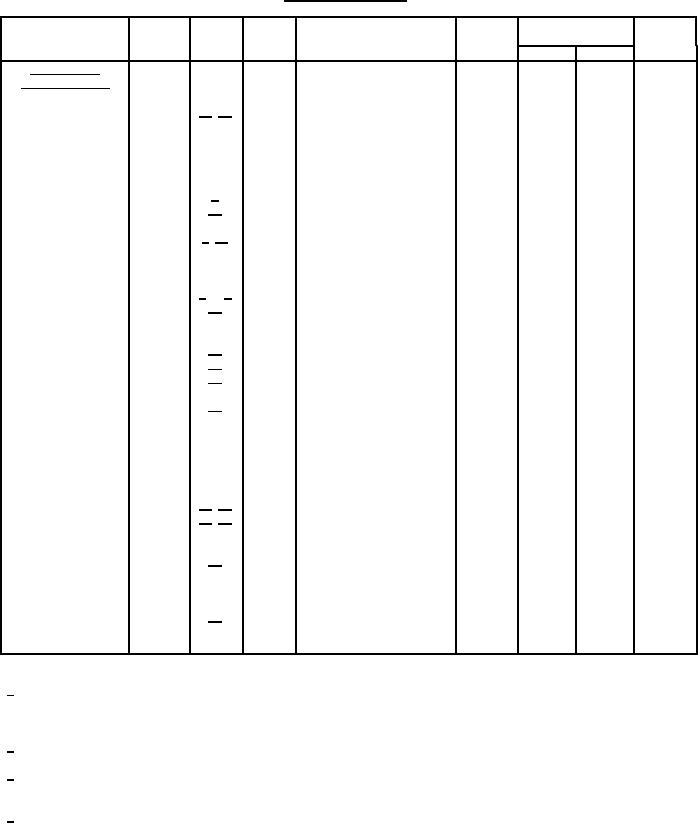
MIL-PRF-1/1701C
TABLE I. Testing and inspections - Continued.
Requirement or test
Method
Notes
Test
Conditions
Symbol
Limits
Unit
Min
Max
Conformance
inspection, part 3
hrs
Life test
2
Group D; F = F3;
1,000
---
t
---
21/ 22/
po = 100 ± 10 kw;
TA = +125°C
Life test end points:
---
µs
8/
Recovery time
3
2.0
t
---
4471
ĆNF
21/
Crystal degrada-
---
---
1.0
---
dB
tion
1/ 14/
1
Insertion loss
---
0.6
4416
dB
Li
---
1
1.2
Ignitor noise
---
4460
dB
NF
ratio (noise
figure change)
5/ 6/ 7/
1
---
Phase shift
See figure 7
Ć∅
14/
44.5
47.5
Degrees
F = F1
Ć∅
349.0
346.0
Degrees
F = F4
Ć∅
312.5
309.5
Degrees
F = F5
1
14/
200
Firing power
30
4496
mw
Po/Du
17/
2
0.5
---
Leakage energy
4452
erg
Ws
18/
0.1
2
---
(spike)
erg
Ws
Eso1 = 29 ± 1 V dc;
---
20/
---
50,000
--
Shutter cycling life
Cycles
---
test
prr = 10 Hz (max);
TA = +125°C
Shutter cycling life-
---
test end points:
0.6
14/ 16/
1
---
4416
Insertion loss
dB
F = F1 through F5
Li
14/ 16/
---
1
25
Insertion loss
4416
dB
Li
F = F1, F4, and F5
(shutter closed)
---
---
10/
---
Degradation due
4021
---
F = 5 Hz to 500 Hz;
---
to vibration
Eso1 = 21 V dc;
t = 15 minutes
Ć∅
F = F4; Es = 21 ± 0.5 V dc;
0.1
11/
---
---
Shutter phase
---
Degree
TA = +25°C and -25°C;
modulation
t = 10 minutes (min)
1/
Two resistors, one in series with each ignitor, are encapsulated as integral parts of the tube. They are selected to provide a current
of 150 µA dc nominal when the specified voltage, Ebb = -860 V dc, is applied to the ignitor terminals (No. 1 and No. 2) of the
tube.
2/
A suitable gasket should be bolted between each flange of the tube and its mating flange (see figure 6).
3/
The minimum interchannel isolation (crosstalk) requirements shall be met when the tube is mounted between waveguide adapters
with standard 0.040 commonwall flanges. Tube shall be in the deionized state for this test.
4/
The shutters provide a convenient method of opening or shorting a waveguide line at low-power levels (incident peak power less
than 1 kw). They are not intended for applications involving the switching of high power, and should remain open or closed
whenever high power is incident on the tube.
4